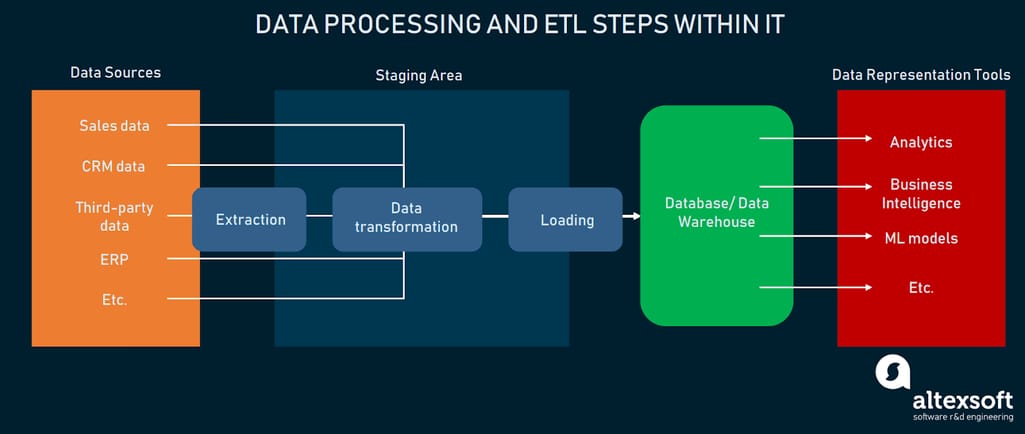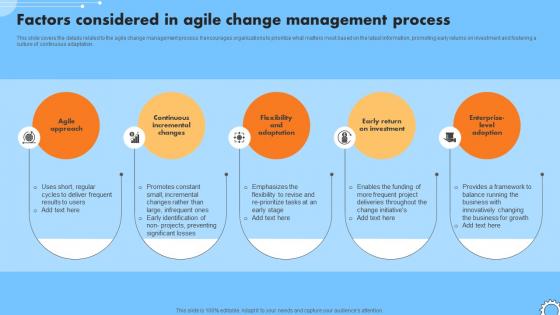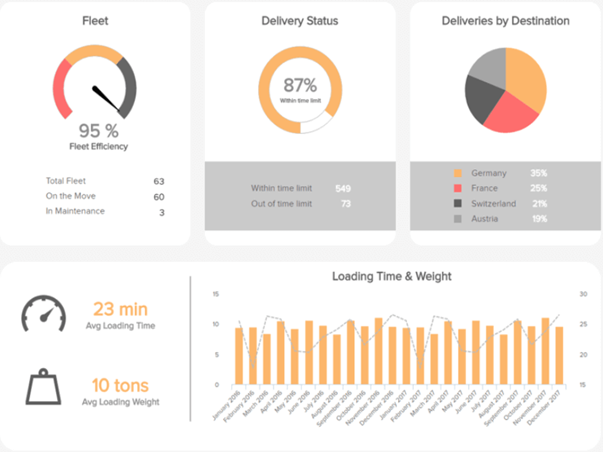The AI-Powered Pitch Deck Revolution
A Three-Step Framework for Success
I've seen countless pitch decks throughout my career, and the ones that truly stand out combine strategic thinking with visual excellence. In this guide, I'll walk you through my proven three-step process for creating compelling AI-powered pitch decks that captivate investors and communicate your vision with clarity and impact.
Clarifying Your Vision with AI
I've found that the most compelling pitch decks begin with absolute clarity of vision. This is where AI becomes your strategic partner, helping you distill complex business concepts into a coherent narrative that resonates with investors.

AI transforms raw business data into structured insights for your pitch deck foundation
Extract and Organize Key Insights
I start by using AI to analyze unstructured business data—market research, customer feedback, financial projections—and extract the patterns and insights that will form the foundation of my pitch. This step is crucial because it helps me identify the strongest elements of my business case without getting lost in the details.
Transform Complex Models into Clear Narratives
Once I have my key insights, I work on transforming technical concepts into a compelling story. AI pitch deck generators excel at this, helping me articulate complex business models in ways that investors can immediately grasp and connect with.
Articulate Your Unique Value Proposition
I leverage PageOn.ai's Vibe Creation feature to help define my unique value proposition. This tool helps me experiment with different ways of expressing my core offering until I find the perfect balance between technical accuracy and emotional resonance.
Foundation Phase Workflow
flowchart TD
A[Raw Business Data] -->|AI Analysis| B[Key Insights]
B --> C[Core Narrative]
B --> D[Value Proposition]
C --> E[Foundation Document]
D --> E
E -->|PageOn.ai Vibe Creation| F[Refined Pitch Foundation]
Key Consideration
While AI can generate impressive content, I always ensure I'm balancing AI-generated material with my authentic business perspective. The most successful pitches maintain a human touch that investors can connect with on a personal level.
Building Your Pitch Architecture
With a clear foundation established, I move to the crucial task of structuring and designing my pitch deck. This is where I transform my vision into a visual journey that guides investors through my business story in a logical, compelling way.
Building a modular pitch architecture with AI Blocks creates clear visual hierarchies
Implement a Systematic Structure
I follow a proven framework for organizing my pitch deck sections, ensuring I cover all critical elements investors expect to see. This typically includes Problem, Solution, Market Opportunity, Business Model, Team, and Ask sections, though I customize this based on my specific business context.
Build with AI Blocks
PageOn.ai's AI Blocks feature has transformed how I structure pitch decks. I use this tool to visually arrange my pitch flow like building with LEGOs, creating modular sections that can be easily rearranged as I refine my story. This approach gives me tremendous flexibility while maintaining a cohesive narrative.
Create Visual Hierarchies
I pay careful attention to creating visual hierarchies that guide investors' attention through my deck. Using pitch deck software with AI capabilities helps me ensure that the most important information stands out while supporting details remain accessible but don't overwhelm.
Investor Attention Distribution Across Pitch Deck Sections
Based on eye-tracking studies, here's how investor attention is typically distributed across pitch deck sections:
Customize for Your Brand Identity
While AI generates excellent starting designs, I always customize slides to align with my brand identity. This ensures consistency and reinforces brand recognition throughout the presentation. I've found that free ai pitch deck generators offer surprisingly robust customization options that can be enhanced with PageOn.ai's design capabilities.
Develop Multiple Variations
I develop multiple slide variations based on different investor personas and preferences. Some investors prefer data-heavy presentations, while others respond better to visually-driven storytelling. Having these variations ready allows me to quickly customize my pitch for specific meetings.
Refinement and Customization: Perfecting Your Pitch
The final step in my process focuses on refinement and personalization. This is where I transform a good pitch deck into a great one by incorporating feedback, customizing for specific audiences, and ensuring every element serves my ultimate goal.

Refining and customizing pitch decks based on feedback and investor profiles
Test and Gather Feedback
I always test different AI-generated versions with advisors and potential investors before finalizing my pitch deck. This feedback loop is invaluable for identifying blind spots and refining my messaging. As industry experts suggest, testing different versions helps you quickly learn what resonates with your target audience.
Generate Tailored Versions
I use PageOn.ai to quickly generate alternate versions of my pitch deck tailored to specific investor interests. For example, if I'm pitching to a tech-focused VC, I might emphasize technological innovation, while for impact investors, I'd highlight sustainability aspects of my business model.
Create Updatable Decks
One of the most valuable aspects of using AI for pitch decks is the ability to create updatable pitch deck versions that evolve with your business. This allows me to quickly refresh data points, add new achievements, or refine messaging without rebuilding from scratch.
Refinement and Customization Process
flowchart TD
A[Initial AI-Generated Pitch] --> B{Test & Feedback}
B -->|Positive| C[Identify Strengths]
B -->|Negative| D[Identify Weaknesses]
C --> E[Enhance Successful Elements]
D --> F[Revise Problem Areas]
E --> G[Create Investor Personas]
F --> G
G --> H[Generate Tailored Versions]
H --> I[Investor-Specific Deck]
I --> J[Gather Performance Data]
J --> K[Continuous Refinement]
Balancing Act
The refinement process requires balancing professional design with authentic storytelling. While I want my pitch deck to look polished and professional, I never sacrifice authenticity for aesthetics. The most compelling pitch decks feel both professional and personal.
Advanced Techniques for Standout AI-Powered Pitch Decks
Once you've mastered the three-step process, I recommend exploring these advanced techniques that can take your AI-powered pitch decks to the next level. These strategies help your presentation stand out in a sea of competing pitches.

Advanced data visualization transforms complex metrics into intuitive interactive graphics
Integrate Sophisticated Data Visualization
I use AI to transform complex metrics into intuitive graphics that tell a story at a glance. This is particularly effective for financial projections, market analysis, and competitive positioning. PageOn.ai's visualization tools excel at creating these data-driven narratives.
Create Interactive Elements
For digital pitch decks, I incorporate "choose your own adventure" interactive elements that allow investors to explore aspects of the business that interest them most. This creates an engaging, personalized experience that traditional static presentations can't match.
Leverage Agentic Capabilities
PageOn.ai's Agentic capabilities help me transform my business vision into a cohesive visual narrative by automatically suggesting connections between different aspects of my business model and creating visual representations of these relationships.
Effectiveness of Different Pitch Deck Elements
Based on investor feedback studies, here's how different elements impact pitch success:
Design Language Consistency
I implement a consistent design language across all slides while maintaining visual interest. This creates a professional, cohesive presentation that feels intentional and well-crafted. Studies of successful pitch decks show that visual consistency significantly increases investor confidence.
First Impression Optimization
I pay special attention to generating compelling taglines and hooks that capture attention in the first 30 seconds. PageOn.ai helps me test multiple options to find the most impactful opening for my specific audience and business proposition.
Common Pitfalls and How to Avoid Them
Even with AI assistance, there are common pitfalls that can undermine the effectiveness of your pitch deck. I've learned to recognize and avoid these challenges to ensure my presentations achieve maximum impact.

Visual guide to avoiding common AI pitch deck pitfalls and implementing solutions
Over-Reliance on AI
I've seen many founders fall into the trap of using AI-generated content without sufficient personal refinement. This results in generic-feeling pitch decks that lack authentic voice and passion. I always treat AI as a collaborative partner rather than the sole creator.
Inconsistent Messaging
When using multiple AI tools or generating different sections separately, inconsistent messaging can creep in. I use PageOn.ai to identify and eliminate messaging inconsistencies across different sections of my pitch deck, ensuring a cohesive narrative throughout.
Information Overload
AI can generate comprehensive content that, while accurate, may overwhelm investors with too much detail. I constantly ask myself: "Does this information directly support my core value proposition?" If not, I remove it to maintain focus and clarity.
| Common Pitfall | Warning Signs | Solution |
|---|---|---|
| Over-reliance on AI | Generic language, lack of unique perspective | Edit AI output to include personal insights and experiences |
| Inconsistent messaging | Different sections contradict or don't build on each other | Use PageOn.ai to analyze narrative flow and suggest improvements |
| Information overload | Slides with too much text, complex visuals | Follow the "one main point per slide" rule |
| Lack of customization | Same pitch for different investor types | Create investor personas and tailor messaging accordingly |
| Technical jargon | Industry-specific terms without explanation | Use PageOn.ai to identify and simplify complex terminology |
Maintaining Authenticity
The most successful pitch decks I've created strike a balance between leveraging AI capabilities and maintaining authenticity. I ensure my unique voice and passion for my business shine through the polished presentation that AI helps me create.
Measuring Success and Iterating
Creating an effective pitch deck is an iterative process. I've developed a systematic approach to measuring success and continuously improving my presentations based on real-world performance data.

Analytics dashboard for tracking pitch deck performance and iterative improvements
Define Clear Metrics
I establish specific metrics to evaluate pitch deck effectiveness, including investor meeting conversion rates, time spent on specific slides, follow-up question patterns, and ultimately, funding success rates.
Track Engagement
For digital pitch decks, I use analytics tools to track investor engagement with different sections. This data helps me identify which parts of my story resonate most strongly and which might need refinement.
Implement Changes Quickly
One of the greatest advantages of AI-powered pitch decks is the ability to quickly implement changes based on feedback. PageOn.ai allows me to make targeted adjustments without disrupting the overall flow and design of my presentation.
Pitch Deck Iteration Impact
Data showing how iterative improvements affect key pitch metrics:
A/B Testing
I regularly A/B test different versions of my pitch deck to optimize conversion rates. This might involve testing different opening hooks, visual styles, or even the order of information presentation. PageOn.ai makes it easy to create these variations and track their performance.
Evolving Strategy
The most successful pitch decks evolve alongside the business they represent. As my company grows and pivots, I ensure my pitch deck strategy evolves accordingly, highlighting new achievements, addressing emerging challenges, and refining the vision based on market feedback.
Case Study: Success Story
A SaaS startup I worked with used PageOn.ai to create an evolving pitch deck that adapted to different investor audiences. By implementing the three-step process outlined in this guide and continuously refining based on feedback, they increased their meeting-to-funding conversion rate by 68% and secured their Series A round in half the expected time.
Transform Your Pitch Decks with PageOn.ai
Ready to create compelling, investor-ready pitch decks that tell your unique business story? PageOn.ai's AI-powered visualization tools make it easy to transform complex ideas into clear, engaging presentations that get results.
Start Creating with PageOn.ai TodayThe Future of AI-Powered Pitch Decks
As AI technology continues to evolve, the possibilities for creating compelling, personalized pitch decks will only expand. I believe we're just beginning to tap into the potential of AI-assisted visual storytelling for business presentations.
The three-step process I've outlined—foundation building, structure and design, and refinement and customization—provides a framework that will remain relevant even as the tools we use continue to advance. By focusing on clarity of vision, strategic structure, and personalized refinement, you can create pitch decks that not only showcase your business effectively but also forge genuine connections with investors.
PageOn.ai stands at the forefront of this evolution, offering tools that transform how we visualize and communicate complex business concepts. Whether you're a first-time founder or a seasoned entrepreneur, these AI-powered visualization capabilities can help you create pitch decks that truly stand out in today's competitive funding environment.
You Might Also Like
Circle of Knowledge Method: Creating Credible Visual Presentations That Resonate
Learn how to implement the Circle of Knowledge Method to create credible, visually stunning presentations that build authority and connect with your audience.
Transform Any Content into Professional Slides: The Ultimate Conversion Guide
Learn expert techniques for converting documents, presentations, and visual content into professional slides with this comprehensive guide to content format transformation.
Mastering Visual Harmony: Typography and Color Selection for Impactful Presentations
Learn how to create professional presentations through strategic typography and color harmony. Discover font pairing, color theory, and design principles for slides that captivate audiences.
Breaking the Ice: Transform Your Opening Minute from Predictable to Powerful
Discover how to transform the first 60 seconds of your presentation from cliché to compelling with visual hooks, interactive strategies, and storytelling techniques using PageOn.ai.
